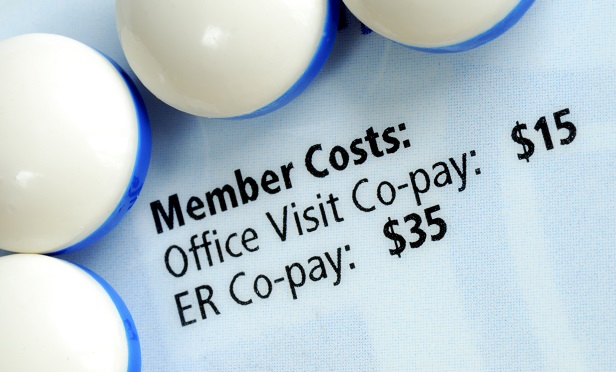 (Photo: Shutterstock)
(Photo: Shutterstock)
A coalition of patient groups are taking the federal government to court over regulatory changes regarding "copay accumulators," a complicated piece of the health care payment puzzle that could result in patients having much higher costs, if the changes stay in place. But some in the industry say the lawsuit is just one move in a much larger conflict between drug industry forces.
The patient groups argue that the copay accumulators that Pharmacy Benefit Managers (PBMs) use have the effect of sharply increasing the amount that patients pay. Industry insiders see the practice as an attempt by PBMs to indirectly shift costs, but as with other health care strategies, consumers can end up caught in the middle.
Recommended For You
Three patients and a range of health care groups are involved in the lawsuit. The lawsuit was filed by the HIV+Hepatitis Policy Institute, the Diabetes Leadership Council, and the Diabetes Patient Advocacy Coalition. The coalition noted in February that its efforts are supported by groups such as the Association of Community Cancer Centers, the Autoimmune Association, and the Chronic Care Policy Alliance. Some of the groups have ties to drug manufacturers.
The groups are suing the U.S. Department of Health and Human Services (HHS), saying that a change in regulations allows PBMs to not count copay assistance plans from drug manufacturers toward the patients' deductibles and out-of-pocket maximums.
"Copay accumulator programs are manifestly unlawful and endanger millions of people living with HIV, hepatitis, and other chronic conditions who rely on copay assistance to afford their medicines," said Carl Schmid, executive director of the HIV+Hepatitis Policy Institute. "Instead of engaging the substance of our case, the government is making the bizarre claim that the rule which expressly allows copay accumulators did not materially change the status quo."
The groups filing the lawsuit also noted that 17 states and Puerto Rico have passed laws requiring insurance plans to count manufacturer copay assistance toward patients' out-of-pocket obligations, and that Congress is considering similar legislation.
Shifting the costs
However the lawsuit turns out, industry analysts say, high costs for specialty drugs and chronic disease management — the areas where patients often have trouble affording drugs — are likely to continue to be a problem. And researchers have found that when patients get hit with higher costs, they are much more likely to stop their treatment.
"Many patients under these programs get surprised as they realize they don't get the copay assistance they had expected and are stuck with a higher bill for their drug than they are used to," said an analysis from IQVIA, an industry technology and research company. "This 'copay surprise' happens as a patient hits the maximum-allowed manufacturer assistance after their benefit runs out. This in turn, can prompt patients to discontinue treatment, which may lead to negative health outcomes and drive-up future costs of health care."
HHS argues in response to the lawsuit that the changes don't really require PBMs to change practices. However, industry insiders seem to expect PBMs to take full advantage of the regulatory language in an effort to shift costs back to insurers.
IQVIA's research showed that 95% of brand-name drugs have manufacturer copay assistance programs, and approximately 75% of patient cost sharing in private plans is now offset by manufacturers, where copay programs are allowed. In public plans such as Medicare, such programs are not allowed due to laws around kickback practices.
Masking the problem
In an analysis by Celine Castronuovo, a writer with Bloomberg Law, the industry practice of providing discounts, coupons, or other assistance can be a sort of Trojan Horse, enticing consumers — in some cases by encouraging them to stay on more-expensive medications, rather than switching to less-expensive ones. Overall, the article said, manufacturer assistance programs can add costs to the system in the long run.
"Copay assistance programs mask the real problem, and that is the high price of drugs in the United States," Robin Feldman, a law professor, quoted in the Bloomberg Law article.
The article went on to say both manufacturers and PBMs have legitimate points, but that the entire supply chain is overly complicated and creates disincentives for reform. It quoted Antonio Ciaccia, CEO of Ohio-based drug pricing data firm 46brooklyn Research, as saying overall prices of medications in the U.S. are over-inflated and result in a system that disenfranchises patients.
"At the end of the day, this is a fight over money between health plans, PBMs, and the drug manufacturers," said Ciaccia.
© 2025 ALM Global, LLC, All Rights Reserved. Request academic re-use from www.copyright.com. All other uses, submit a request to [email protected]. For more information visit Asset & Logo Licensing.







